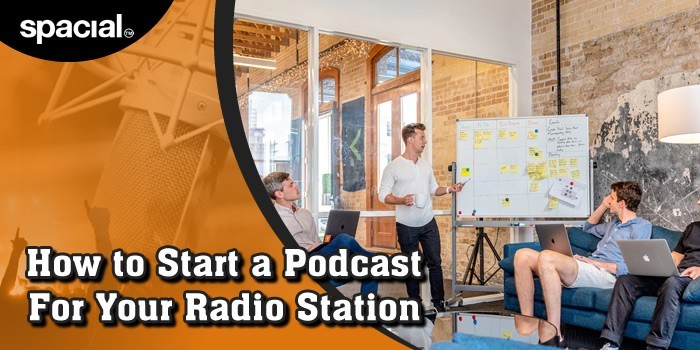
How To Start A Podcast For Your Radio Station
ALSO READ: PART 1: Why Your Radio Station Should Start A Podcast PART 3: Enterprise Podcasting Made Simple with Omny Studio

Now that we know Why Your Radio Station Should Start a Podcast, let’s dig into How you can start a podcast for your radio station. Contrary to popular belief, a podcast does not require a great deal of money, technique or expertise to be created. All you have to do is follow a step-by-step guide to jump on the bandwagon.
-
Decide on a Niche
To begin your journey of creating and publishing your podcasts, you need to define your niche or target market. If you have a radio station or an online presence such as a website or social media platforms, it means you already have a niche that you are targeting. Your content can, therefore, be centred around your niche. The platforms (radio and online) also come in hand when you are now promoting your podcasts. If you have not defined your niche market, you can start by asking yourself questions like what do I love to talk about? What problems can I discuss that will help the listeners relate etc.
-
Decide on Content & understand what type of Podcast you want to create
To create a podcast, you need to first understand the different types of podcasts and what purpose they serve. There are 3 main types of podcasts: the interview podcast, the solo podcast and the multi-host podcast. An interview podcast, as its name suggests, contain a single or a couple of hosts interviewing a special guest. These could be published weekly, daily or even monthly. There isn’t much preparation you have to do before going live with this type of podcast; all you need is a guest and little background research on what they do and you’re good to go.
The solo podcast, however, is a little more challenging. While they are the most recommended format for first-timers, they can seem a little daunting because they are essentially a one-man show. If we look at it from a technical point of view, it is pretty simple; all you need is a topic to discuss and the talent of being able to talk to yourself.
The third and perhaps the most dynamic type of podcast is the multi-host podcast. This is a good option when the topic you want to discuss requires a counter opinion that you want to also include. Additionally, if you have a business partner behind the idea that you want to discuss, this might be the best option for you. Multi-host podcasts are easier to carry out because they ease out the pressure that you might be feeling if you record one by yourself. Moreover, when you have a friend or someone you know in the studio with you to initiate conversation, the audience is automatically drawn into the whole scenario.
-
Come Up With a Name and Cover Art for your Podcast
Once you have decided on the niche, type of podcast and content, you now need to come up with a name and cover art for your podcast. Many podcasters mistakenly overlook the importance of a good name for their podcast and that is where they lose out. The name and the cover art of your podcast are responsible for creating that first impression on your potential listeners. It is the first thing they will look at or hear if they ever come across your podcast. Therefore, a podcast name needs to be catchy, personal and should also give your target audience a little sneak peek into what the podcast is going to be about. The cover art similarly should be able to attract your listeners. Spend a few dollars on a graphic designer and have a customized cover art developed for your podcast; it will surely be worth it.
-
Decide on a Format Your Podcast
The next factor you need to worry about is the format of your podcast. This includes the progression of the discussion, the introduction of new topics to discuss and the length of one episode. The basic format that is most commonly used in all styles of podcasts is an intro followed by important announcements, a guest interview (if there is any), some closing thoughts and the outro. The length of each episode depends on the type of content you’re generating but the most common length of one episode is anywhere from 20 to 45 minutes. Make sure to always have engaging topics to talk about and not bore your listeners with filler material.
-
Record Your Podcast
Once you have it all planned, it is now time to get down to business. To record a podcast, you need a computer, a functional microphone and recording software such as the Omny platform. Resources are available to guide you on how to operate the Omny platform. The recording might take a little while and you can always pause and start over from wherever you like. After covering all the topics under discussion, you can give your podcast a listen and edit out whatever you feel is not needed. Editing software is also available for Windows PC and Apple Mac separately, depending on your computer. Visit https://omnystudio.com/learn to learn all about recording and editing podcasts.
Once you’ve created your masterpiece, all that’s left to do is to make it public for your target audience to listen to. You can submit your podcast on iTunes, Spotify or your website if you have one and then ask your friends and family to spread the link as much as possible.
READ MORE
PART 1: Why Your Radio Station Should Start A Podcast
PART 3: Enterprise Podcasting Made Simple with Omny Studio
BONUS FEATURES
